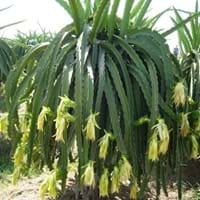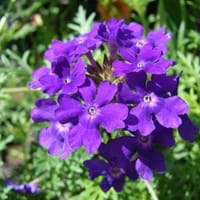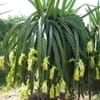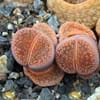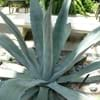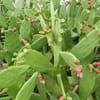Life Span
Perennial
Annual
Type
Cactus, Fruit
Flowering Plants
Origin
Caribbean, Central America
America, Europe
Types
Hylocereus undatus, Hylocereus costaricensis, Hylocereus megalanthus
Clump verbena, Moss verbena, Annual Verbena, Brazilian verbena, Sandpaper Verbana
Habitat
Rocky areas, Terrestrial
Forest edges, Hillside, Woods
USDA Hardiness Zone
11-15
3-9
AHS Heat Zone
12-9
Not Available
Sunset Zone
H1, H2, 21, 22, 23, 24
not available
Habit
Spreading
Not Available
Flower Color
White, Gold
Blue, Dark Purple, Light Purple, Red, White
Flower Color Modifier
Bicolor
Not Available
Fruit Color
Red
Not Available
Leaf Color in Spring
Not Available
Dark Green
Leaf Color in Summer
Not Available
Dark Green, Green
Leaf Color in Fall
Not Available
Dark Green, Green
Leaf Color in Winter
Not Available
Not Available
Leaf Shape
Toothed
Oblovate
Plant Season
Summer, Fall
Early Spring, Late Autumn
Sunlight
Full Sun
Full Sun, Partial shade
Type of Soil
Loam, Sand
Well drained
The pH of Soil
Acidic, Neutral, Alkaline
Neutral, Slightly Acidic
Soil Drainage
Well drained
Average
Bloom Time
Early Summer, Summer
Early Fall, Early Summer, Fall, Late Spring, Late Summer, Summer
Tolerances
Drought
Not Available
Where to Plant?
Container, Ground, Pot
Container, Ground
How to Plant?
Cuttings, reseeds, Stem Cutting
Seedlings, Stem Planting
Plant Maintenance
Medium
Medium
Watering Requirements
Average Water Needs, Keep the Soil well drained
Do not water frequently, Medium, Never Over-water, Requires regular watering, Requires watering in the growing season
In Summer
Lots of watering
Lots of watering
In Spring
Moderate
Moderate
In Winter
Average Water
Average Water
Soil pH
Acidic, Neutral, Alkaline
Neutral, Slightly Acidic
Soil Type
Loam, Sand
Well drained
Soil Drainage Capacity
Well drained
Average
Sun Exposure
Full Sun
Full Sun, Partial shade
Pruning
Remove damaged leaves, Remove dead branches, Remove dead leaves
Prune for shortening long shoots, Prune if you want to improve plant shape, Prune lower leaves, Prune regularly, Prune to control growth
Fertilizers
All-Purpose Liquid Fertilizer
All-Purpose Liquid Fertilizer
Pests and Diseases
Red blotch
Not Available
Plant Tolerance
Drought
Drought
Flower Petal Number
Semi-Double
Single
Showy Foliage
No
Not Available
Foliage Texture
Bold
Not Available
Foliage Sheen
Not Available
Not Available
Invasive
No
Not Available
Attracts
Not Available
Butterflies
Allergy
no allergic reactions
Arthritis, Asthma, Chest Pain, Itchiness, Whooping Cough
Aesthetic Uses
As decorated salad, Beautification
Showy Purposes
Beauty Benefits
Not Available
Not Available
Environmental Uses
Air purification
Air purification
Medicinal Uses
Antidiabetic, Appetite enhancer, increase memory, Weight loss
Arthritis, Gallbladder Diseases, Itching, Jaundice, Joint pain, Kidney problems, Liver problems, Metabolic disorders, Sore throat, Upset stomach, Urinary tract problems
Part of Plant Used
Fruits
Flowers, Root
Other Uses
Not Available
Air freshner, Can be made into a herbal tea, Cosmetics, Decoration Purposes, Economic Purpose, Employed in herbal medicine, Oil is used for aromatherapy, Oil is used in perfume, soaps, creams, etc., Showy Purposes, Used As Food, Used as Ornamental plant, Used for flavoring in Liquors, dairy products, gelatins,puddings, meats, candies, etc., Used for fragrance
Used As Indoor Plant
Yes
No
Used As Outdoor Plant
Yes
Yes
Garden Design
Container, Feature Plant, Houseplant, Rock Garden, Wall, Tropical
Bedding Plant, Bonsai, Container, Edible, Herb
Botanical Name
HYLOCEREUS undatus
Purpletop Vervain
Common Name
Pitahaya, Dragon fruit, Night blooming Cereus, Strawberry Pear, Belle of the Night, Cinderella Plant, Jesus in the Cradle
Verbena
In Hindi
Red Pitaya
verbena
In German
Drachenfrucht, Distelbirne
Eisenkraut
In French
pitaya, fruit du dragon, cierge-lézard, poire de chardon
verveine
In Spanish
pitahaya roja (Colombia, Mexico, Venezuela); flor de caliz, pitajava (Puerto Rico); junco, junco tapatio, pitahaya orejona, reina de la noche, tasajo (Mexico)
Verbena
In Greek
Φρούτο του δράκου (fruto tu draku)
λουίζα
In Portuguese
pitaia, cato-barse, cardo-ananaz, rainha da noite
verbena
In Polish
Red Pitaya
werbena
In Latin
Red Pitaya
Grindelia
Phylum
Magnoliophyta
Magnoliophyta
Class
Magnoliopsida
Magnoliopsida
Order
Caryophyllales
Lamiales
Family
Cactaceae
Verbenaceae
Clade
Angiosperms, Core eudicots, Eudicots
Not Available
Tribe
Cacteae
Not Available
Subfamily
Cactoideae
Not Available
Number of Species
Not Available
Importance of Red Pitaya and Verbena
Want to have the most appropriate plant for your garden? You might want to know the importance of Red Pitaya and Verbena. Basically, these two plants vary in many aspects. Compare Red Pitaya and Verbena as they differ in many characteristics such as their life, care, benefits, facts, etc. Every gardener must at least have the slightest clue about the plants he wants to plant in his garden. Compare their benefits, which differ in many ways like facts and uses. The medicinal use of Red Pitaya is Antidiabetic, Appetite enhancer, increase memory and Weight loss whereas of Verbena is Arthritis, Gallbladder Diseases, Itching, Jaundice, Joint pain, Kidney problems, Liver problems, Metabolic disorders, Sore throat, Upset stomach and Urinary tract problems. Red Pitaya has beauty benefits as follows: Not Available while Verbena has beauty benefits as follows: Not Available.
Compare Facts of Red Pitaya vs Verbena
How to choose the best garden plant for your garden depending upon its facts? Here garden plant comparison will help you to solve this query. Compare the facts of Red Pitaya vs Verbena and know which one to choose. As garden plants have benefits and other uses, allergy is also a major drawback of plants for some people. Allergic reactions of Red Pitaya are no allergic reactions whereas of Verbena have Arthritis, Asthma, Chest Pain, Itchiness and Whooping Cough respectively. Having a fruit bearing plant in your garden can be a plus point of your garden. Red Pitaya has showy fruits and Verbena has no showy fruits. Also Red Pitaya is not flowering and Verbena is flowering. You can compare Red Pitaya and Verbena facts and facts of other plants too.
